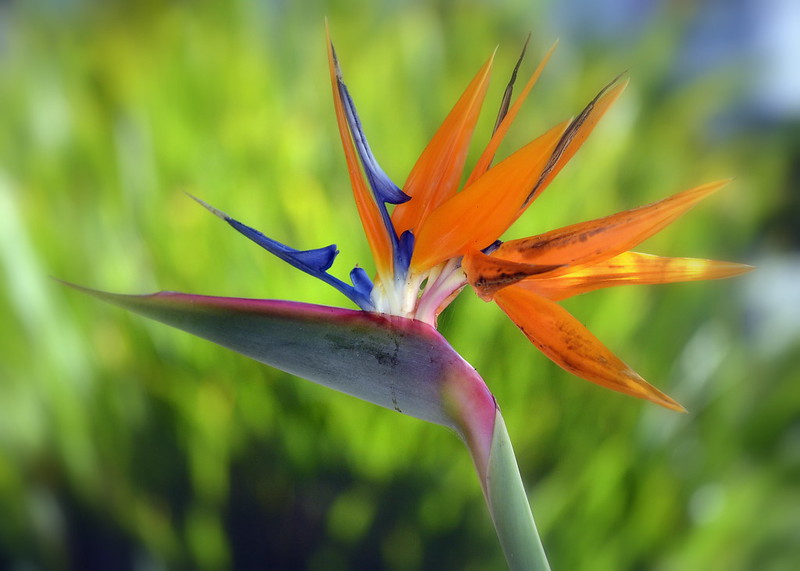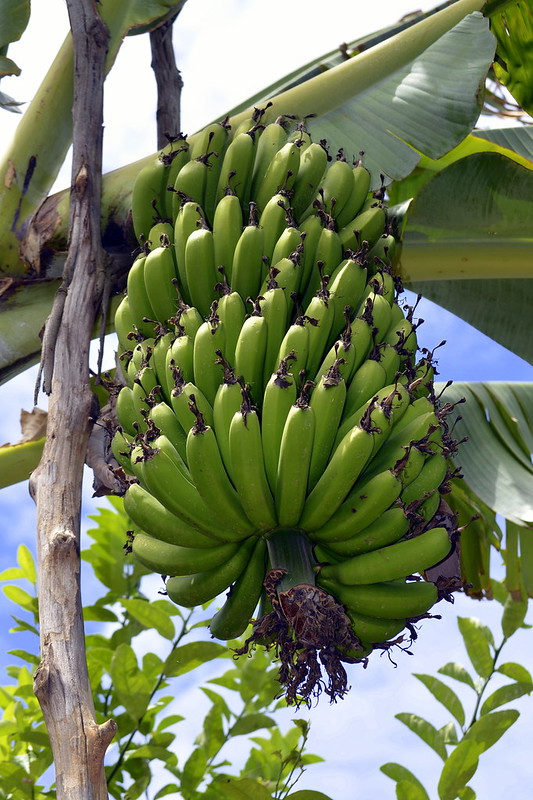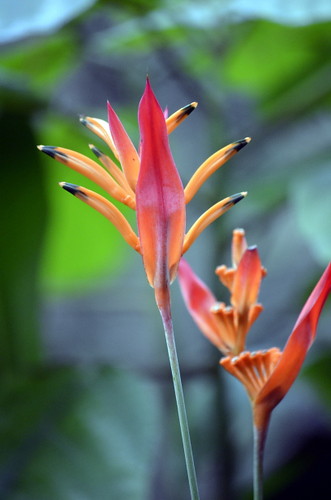Is it a bird or a banana? When it comes to Bird of Paradise, False Bird of Paradise, Parrot or Parakeet Flower, Macaw Flower, Crane Flower, Banana, Wild Banana, or Wild Plantain–it can be hard to tell which is which. That’s because these tropical plants belong to three closely related families: Strelitiziaceae, Musaceae, and Heliconiaceae. And yes, some look like birds, others look like banana plants, and some actually are banana plants.
Though common plant names can be endearingly whimsical and creative, they often lead to confusion; many plants have multiple common names and the same common name can refer to more than one plant. Today, thanks to binomial nomenclature (and to Google and other easily accessible sources), it is fairly easy to figure out that one person’s Bird of Paradise is someone else’s Crane Flower, and that both, in fact, are the same Strelitizia reginae.
Carl Linnaeus laid the foundations for binomial nomenclature in his 1753 Species Plantarum. According to the system, all living things must have a scientific name in Latin consisting of two basic parts. The first part identifies the genus; the second part identifies the species within the genus (if, as happened to me, the taxonomic ranks you learned in school have since retreated to the lesser-used recesses of your brain, they are: kingdom, phylum, class, order, family, genus, species.) As an example, the American Robin, a migratory bird in the thrush family, belongs to the genus Turdus (this somewhat unfortunate name means thrush in Latin…) and to the species migratorius within that genus. The European Robin, however, belongs to the genus Erithacus and to the species rubecula, which is derived from the Latin for “red.”
But back to plants that look like birds. In 1773, Sir Joseph Banks (then director of Kew Gardens) took advantage of the system of binomial nomenclature to give the exotic Bird of Paradise plant–with its orange sepals, purple petals, and beak-like spathe–its scientific name (Strelitzia reginae) in honor of Queen Charlotte of Mecklenburg-Strelitz. Queen Charlotte was the wife of King George III of England, an enthusiastic amateur botanist, and a strong supporter of Kew Gardens. The genus name Strelitzia refers to the Queen’s birthplace; the species name reginae comes from the Latin for “queen.” Strelitzia nicolai, on the other hand, refers to the Wild Banana, aka the Giant White Bird of Paradise. It received its species name in the 1800s, when two German-Russian botanists named the plant nicolai in honor of the Grand Duke Nikolai Nikolaievich, son of Czar Nicholas I of Russia. Birds or bananas–those are lofty names indeed. I’m just glad I now know which is which.

Strelitzia reginae (Bird of Paradise) aka Crane Flower in its native South Africa

Strelitzia nicolai (Giant White Bird of Paradise) aka Wild Banana–though it does not produce edible fruit.


Strelitzia nicolai, left; an edible banana plant in the Musaceae family, right. They look very similar when not in flower–see the leaves.


Heliconia psittacorum (Parakeet or Parrot Heliconia), left; Heliconia bihai (Macaw Flower), right. Heliconia are also known as False Bird of Paradise and Wild Plantains because their leaves are similar to the leaves of the Bird of Paradise and banana plants.








2 Responses to “Birds or Bananas? Strelitzia, Musa, and Heliconia”